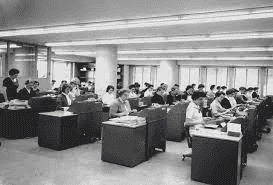When it comes to office space planning, the past can teach us a lot.
We can expect a wide variety of effective and varied uses for office space as we transition into a new office environment that is designed to meet all needs.
In the 1950s, the cluster environment was introduced; a division of areas by department. The German designers introduced and influenced the cluster environment. It was designed with a more modern perspective, and it was considered more of a landscape than a simple room full of people. In the fifties, desks were grouped together in order to facilitate communication between co-workers and provide a less rigid structure.

In the 60s and 70s, the office was a bustling place. The cubicle culture was born in this age of communication, telephony and the need for calm and quiet. This office was designed with portable walls that sloped to create workstations.
The cubicle era gained further momentum in the 1980s and 1990s. Workstations were often enclosed by a fourth partition to provide extra privacy, and the limited space was filled with a desk and computer.
Technology has advanced since the 1990s. Internet and digital innovations have changed the way that we work. They’ve made the world smaller, and allowed for greater and faster interaction than ever.
The physical office space is affected by new technologies. Open plan offices are the norm as computers shrink and walls fall. Laptops make flexible working methods like hot desking the norm. For Cheap Laptops, go to www.refurbishedlaptops.co.uk/

It is clear that there are many lessons to be learned from past trends in office design. We can use the best features of each generation to guide us into the future.
